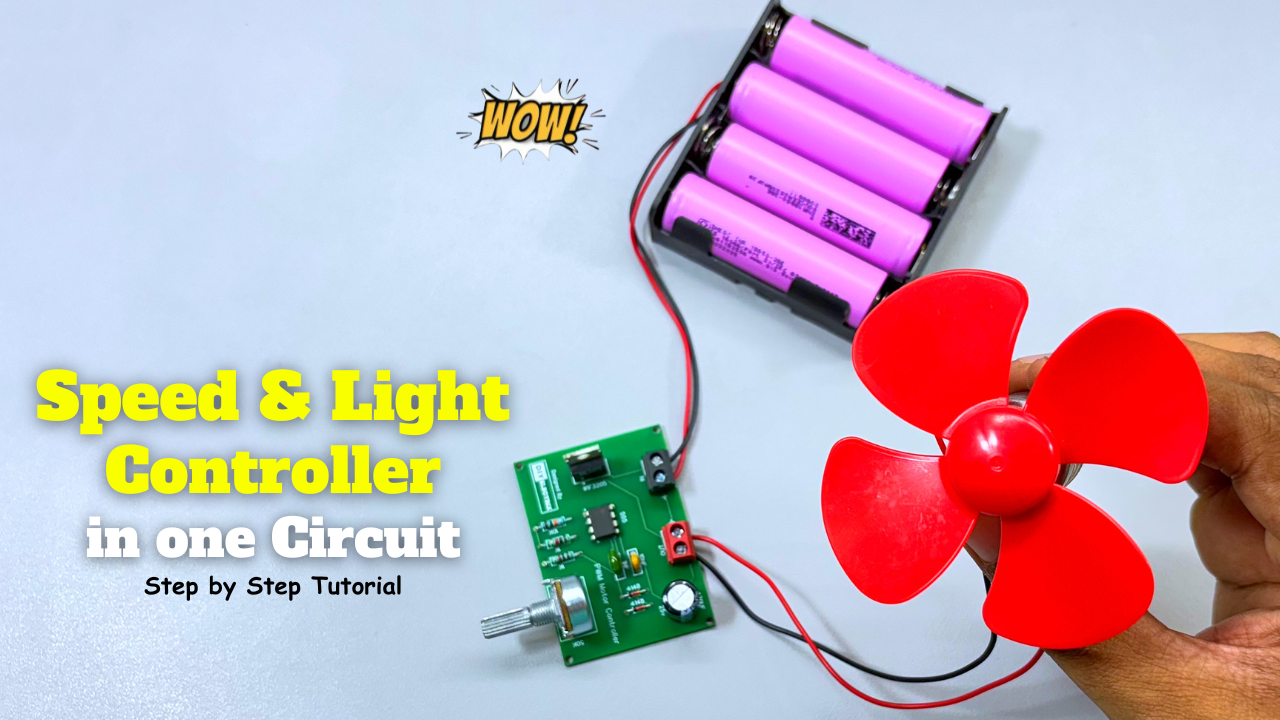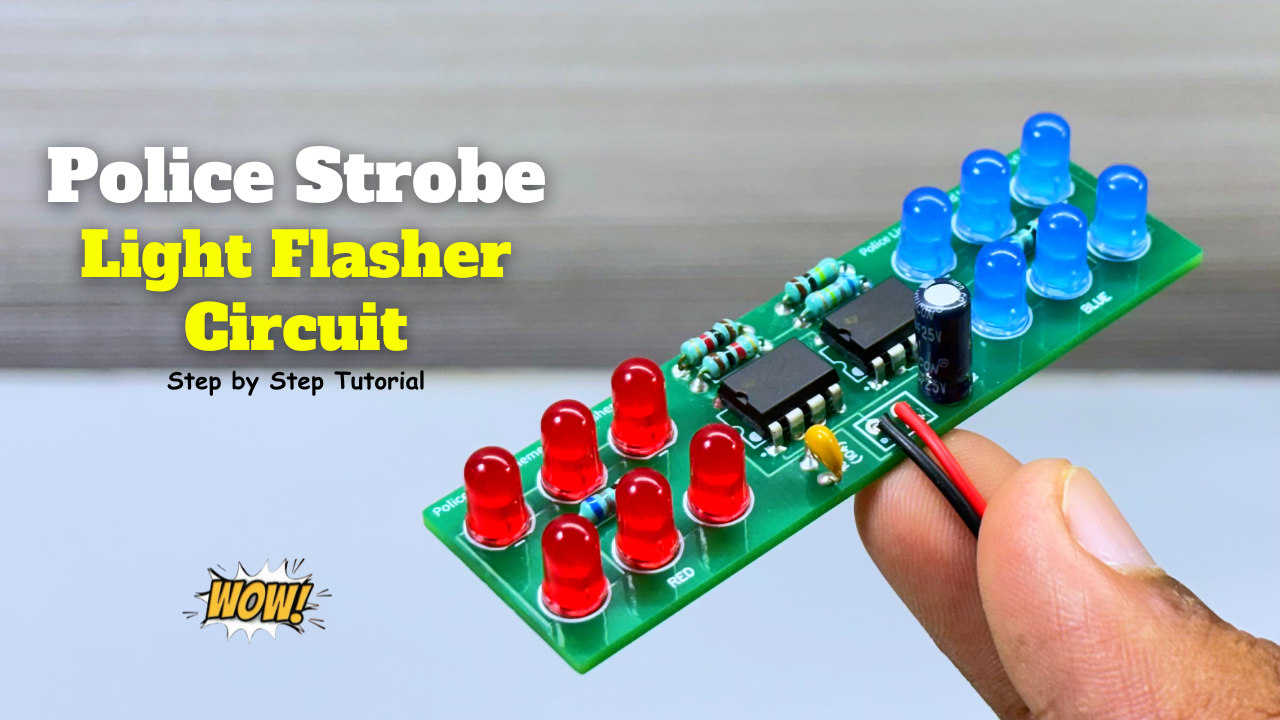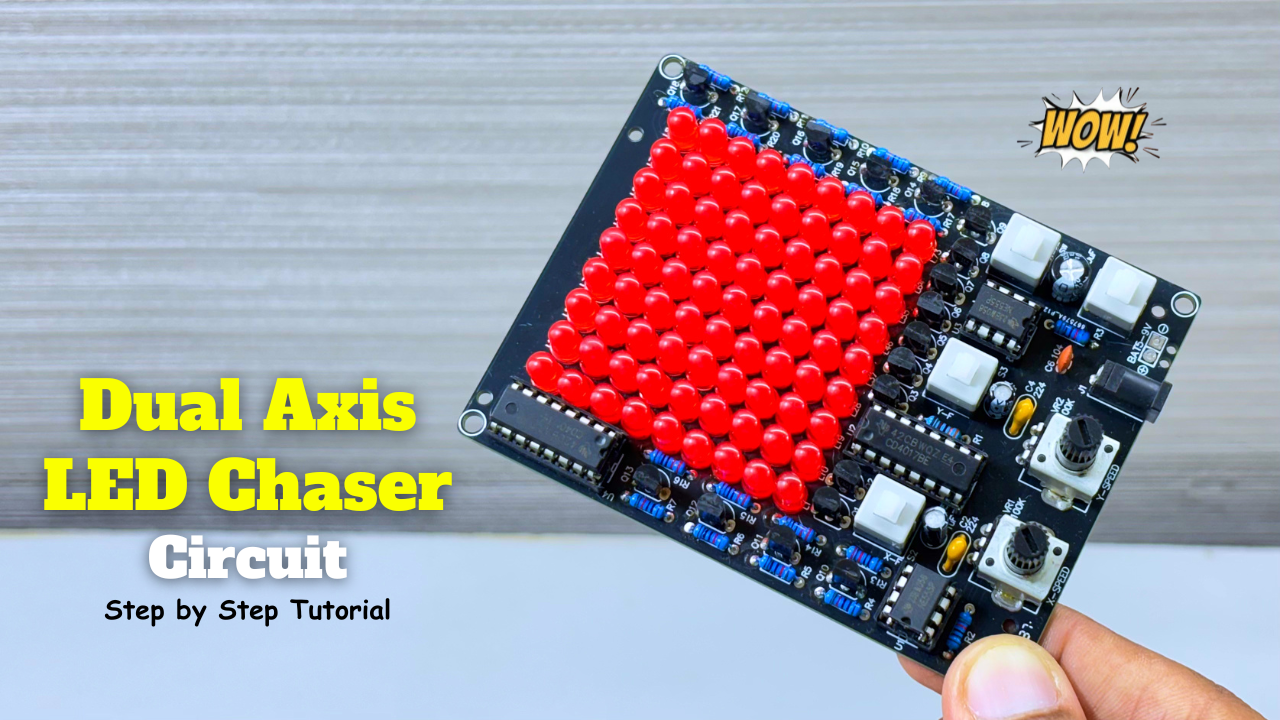A strip light flasher is an electronic circuit or device that makes LED strip lights blink or flash in a repetitive pattern. This can be used for decorative, signaling, or entertainment purposes. The flashing effect is typically achieved by controlling the power supply to the LED strip in an on-off pattern at regular intervals.
Applications
- Decorative Lighting: Used in homes, parties, and events for aesthetic effects.
- Emergency and Signal Lighting: Flashing lights attract attention, making them suitable for alarms or emergency vehicles.
- Advertising Displays: To create eye-catching effects on signs or boards.
Components Required
- Tip41c
- BC547
- 470 uf 35v Capacitor
- 100-ohm Resistor
- 10k potentiometer
- Connectors
- Heat Sink
Gerber File:
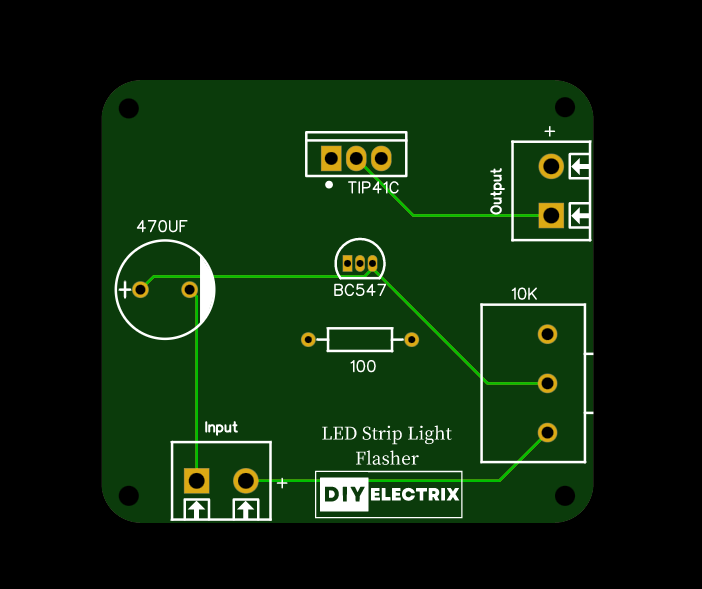
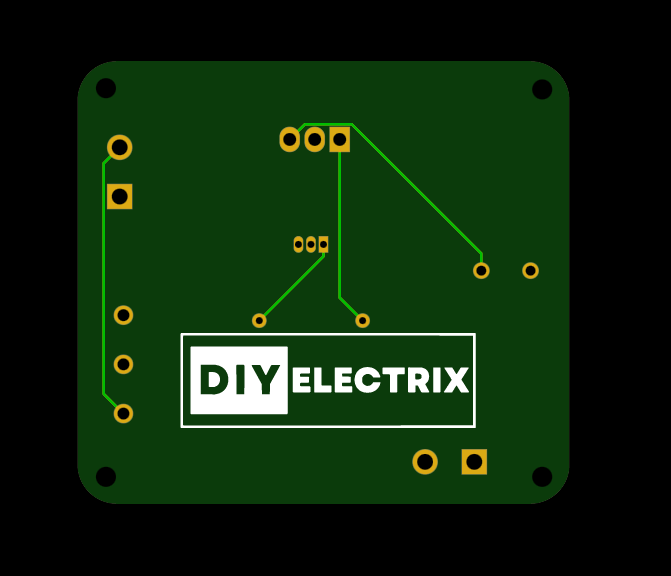
Special Thanks to Our Sponser – JLCPCB:
No project is complete without the right tool and materials. That’s why our sponser JLCPCB stepped into provide essential material for the project. JLCPCB is a leading provider of high quality printed circuit board and PCB assembling services.
Simply head over to JLCPCB, Upload your gerber file, select specification and just place your order.
JLCPCB is offering massive discounts and incredible giveaways during its Black Friday sale! Enjoy savings of up to $252 and a guaranteed prize with every entry, including a chance to win a Samsung 55″ gaming monitor or DJI NEO drone.


How To Order PCB
Circuit Diagram:
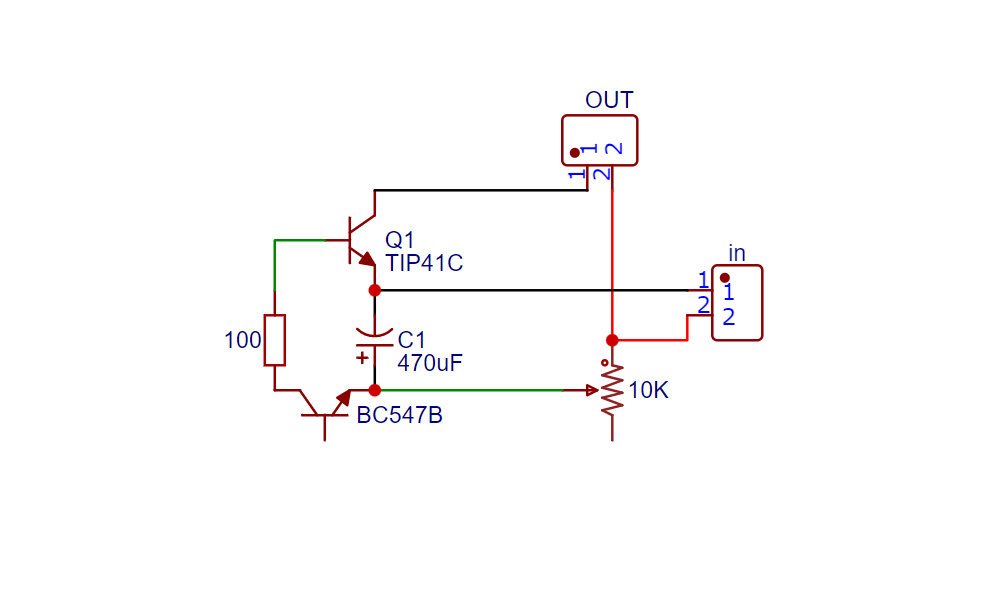
TIP41C:
The TIP41C is a popular NPN power transistor used in electronic circuits. It is part of the TIP41 family and is well-suited for general-purpose applications involving medium power amplification or switching. Here’s a quick rundown of its specifications and usage:
Specifications of TIP41C:
- Type: NPN power transistor
- Maximum Collector-Emitter Voltage (V<sub>CEO</sub>): 100V
- Maximum Collector Current (I<sub>C</sub>): 6A
- Power Dissipation (P<sub>D</sub>): 65W
- Current Gain (h<sub>FE</sub>): 15 to 75
- Operating Temperature Range: -65°C to 150°C
- Package: TO-220
Applications:
- Audio Amplifiers: These are used in the amplifiers’ output stage.
- Motor Control: Drives DC motors in low to medium-power applications.
- Switching Circuits: Suitable for high-speed switching.
- LED Drivers: Controls high-current LED strips or arrays.
- Voltage Regulation: Part of circuits like linear regulators.
Pin Configuration:
- Base (B): Control pin for switching the transistor.
- Collector (C): Current enters this pin when the transistor is on.
- Emitter (E): Current exits this pin when the transistor is on.
BC547:
The BC547 is a widely used NPN bipolar junction transistor (BJT) commonly found in low-power amplification and switching applications. It’s a general-purpose transistor, ideal for hobbyist and educational projects due to its affordability and ease of use.
Specifications of BC547:
- Type: NPN transistor
- Maximum Collector-Emitter Voltage (V<sub>CEO</sub>): 45V
- Maximum Collector Current (I<sub>C</sub>): 100mA
- Maximum Power Dissipation (P<sub>D</sub>): 500mW
- Current Gain (h<sub>FE</sub>): 110 to 800 (depends on the specific variant: A, B, or C)
- Operating Temperature Range: -65°C to 150°C
- Package: TO-92
Pin Configuration:
- Collector (C): Current flows into this pin when the transistor is on.
- Base (B): A small current to this pin controls the larger current flow from collector to emitter.
- Emitter (E): Current exits this pin.
Applications:
- Signal Amplification: Used in audio amplifiers or other low-power amplification circuits.
- Switching: Ideal for controlling LEDs, relays, and small devices.
- Oscillators: Used in oscillator circuits for timing and frequency generation.
- Voltage Regulation: Acts as a part of voltage regulator circuits.
More Projects
-
Speed & Light Contoller in one circuit
A PWM (Pulse Width Modulation) motor controller is an electronic device that uses PWM signals to control the speed and direction of a motor. It works by varying the width …
-
Police Strobe Light Effect Circuit
A Police Strobe Light Chaser Circuit is an electronic circuit designed to mimic the flashing red and blue lights used on police vehicles. It alternately flashes groups of LEDs (commonly …
-
Dual Axis LED Chaser Circuit
Components Required: Special Thanks to Our Sponser – JLCPCB: No project is complete without the right tool and materials. That’s why our sponser JLCPCB stepped into provide essential material for …

